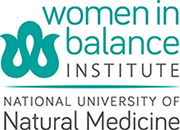One of the most popular questions we receive from women is “Should I take hormone replacement therapy?” Answering that question is ultimately between you and your health care provider. But here are some essential things you should know about the range of hormone options.
There are three basic categories of hormones
Bioidentical Hormones
Natural or bioidentical hormones are hormones made from a natural substance and are bio-chemically identical to human hormones (called bioidentical hormone therapy or BHRT) and then compounded by a pharmacist as a customized dose and in a customized preparation.
Compounded Bioidentical QuickFacts:
- Customized for the individual and meet the unique needs of each woman
- Offered in lower doses, special combinations, and unique delivery methods
- Prescribed by a health care provider and made by a compounding pharmacy
- Tolerated better by many women because they are identical to the hormones in the body and can be delivered in individualized doses
Note: Progesterone creams sold over the counter also are available in unique low doses. Look for brands that contain USP progesterone, have supporting research, and are paraben free.
Now such hormones are produced by pharmaceutical companies. However, they only offer standard doses, not customized formulations, and may include the specific (patented) additive of a binder, filler, preservative, dye or adhesive. (Examples include Vivelle, Prometrium, Climara). The bioidentical hormones from pharmaceutical companies come in limited doses and delivery methods.
Over the past decade, millions of women have used bioidentical hormones with great success and improvement in health. Research studies done in the U.S. and Europe on bioidentical hormones have confirmed this.
Commonly used bioidentical hormones
Estrogen
A. Bi-estrogen (Bi-Est), a combination of estriol and estradiol. From 50% to 80% of Bi-Est is estriol, which has been shown to protect against breast cancer in animal studies.
Estriol causes little or no stimulation to the uterine lining and is clinically effective for the treatment of symptoms caused by estrogen deficiency, such as vaginal dryness and atrophy, painful intercourse, and urinary tract disorders (incontinence, frequent urinary tract infections).
Estradiol relieves symptoms such as vaginal thinning and dryness. It decreases hot flashes and night sweats; improves mood, energy level, sleep patterns, memory, and cognitive function; and reduces bone loss and the risk of developing type 2 diabetes. It also helps to lower blood pressure.
B. Tri-estrogen (Tri-Est) a combination of 80% estriol, 10% estradiol, and 10% estrone. Only a few women may need supplemental estrone, which is the primary estrogen produced after menopause. Estrone is produced from hormone precursors in peripheral fat tissue, so it is typically reserved for underweight women or those of low normal weight.
Progesterone
Progesterone is a hormone commonly prescribed for women with too much estrogen relative to the level of progesterone produced by the body. Progesterone minimizes the stimulating effects of estrogen on coronary arteries, and when given alone or combined with estrogen, it may improve bone mineral density. Progesterone improves sleep, may increase libido, acts as a diuretic, lowers blood pressure, and improves the insulin-glucose balance to facilitate blood glucose control.
***Special note:“Progestins” are sometimes erroneously referred to as “progesterone.” A progestin is very different and is not a bioidentical hormone, but rather a synthetic hormone made to mimic the effects of progesterone. Some practitioners do not make the distinction between progestin and progesterone, which has caused much confusion.
For example, progestins are given to women to prevent pregnancy, whereas progesterone is used to assist fertility. Since progestins are foreign to a woman’s body, sometimes they create adverse effects on a woman’s brain, blood vessels, skin, heart and breast.
DHEA
Dehydroepiandrosterone (DHEA) is prescribed for women whose hormone profile as determined by saliva, blood or urine testing indicates a low level of DHEA. DHEA enhances libido, helps to build bone mass, lowers the levels of cholesterol and triglycerides, improves the sense of well-being, and increases alertness.
Testosterone
Testosterone is prescribed for women deficient in that hormone. It can help to improve libido, help to build bone mass, improve mood and the sense of well-being, increase muscle mass and strength, lower levels of cholesterol and triglycerides, normalize blood glucose levels, and decrease body fat.
Non-Bioidentical Hormones [Conjugated Equine Estrogens]
Non-bioidentical hormones can be natural – to a horse – but not bio-chemically identical to a woman’s hormones. They are manufactured to “act like” human estrogens. Premarin, made from the estrogens found in pregnant mare’s urine, is an example of this. Many women experience side effects because the chemical structure does not match a woman’s biological hormone receptors.
Synthetic Hormones
Synthetic hormones are not derived from a natural substance and not biochemically identical. Synthetic hormones were created by pharmaceutical companies in an attempt to mimic the effects of female natural hormones. The difference between synthetic progestins and progesterone is very significant.
Example: Provera (a synthetic progesterone or progestin) is not the same as progesterone, which is the natural female hormone. Progestins are given to women to prevent pregnancy, whereas progesterone is used to assist fertility.
Since progestins are foreign to a woman’s body, they can create adverse effects on a woman’s brain, blood vessels, skin, heart and breast. [In selected cases however, they may be a necessary option.]
* * *
In most cases, Women in Balance believes that if a woman needs to supplement her hormones she should work with her health care provider. Only if hormone treatment is needed, she choose bioidentical hormones in appropriate physiological doses.


